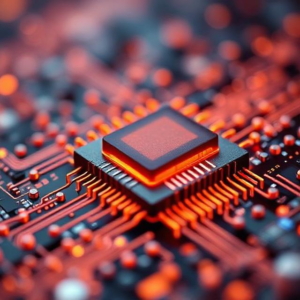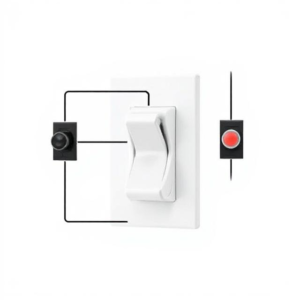1. What are Transistors?
A transistor is like a tiny electronic switch. It can turn things on and off and control the flow of electricity. Transistors are crucial for almost all electronic devices, like computers and phones. They help process information by acting as switches or amplifiers.

2. What Does “Nano” Mean?
“Nano” refers to something extremely tiny — one nanometer is one-billionth of a meter (0.000000001 meters). For comparison, a human hair is about 80,000 nanometers wide. So when we talk about nano-transistors, we’re talking about transistors that are incredibly small — smaller than the width of a human hair!
3. What are Nano-Transistors?
A nano-transistor is a transistor that is built at a scale that is so small, it operates on the nanoscale (just a few atoms or molecules wide). These tiny transistors are designed to continue the trend of making electronics faster, smaller, and more efficient. In the world of computers and smartphones, nano-transistors are used to pack more power into smaller spaces.
4. Why are Nano-Transistors Important?
Nano-transistors are important because:
- Speed: They can switch on and off faster than bigger transistors.
- Efficiency: Smaller transistors use less power, which helps reduce heat and makes devices last longer on a single battery charge.
- Size: By making transistors smaller, you can fit more of them into the same space, allowing for more powerful and compact devices.
For example, a modern smartphone has billions of nano-transistors that work together to run apps, display images, and handle many tasks at once.
5. What are Nano-Devices?
A nano-device is any device built using nano-scale technology. These devices can be made up of nano-transistors and other tiny components. Nano-devices are often used in:
- Medical applications: Tiny sensors that can detect diseases at a molecular level.
- Electronics: Smaller, more efficient processors for computers and smartphones.
- Energy: Better solar cells or batteries that are more efficient and last longer.
6. How Are Nano-Transistors and Nano-Devices Made?
Making nano-transistors and nano-devices requires advanced techniques in science and engineering, often involving:
- Lithography: A process that uses light or other forms of energy to create patterns on a very small scale, shaping the components of the transistors.
- Atomic-level manipulation: At the nanoscale, materials and structures are manipulated at the atomic level, which is a huge challenge, but it allows for precise control.
7. What Are the Challenges?
While nano-transistors and nano-devices are exciting and offer lots of potential, there are challenges:
- Heat Management: As transistors get smaller, they generate heat more easily, and it’s harder to cool them down.
- Quantum Effects: At such small sizes, quantum mechanics (weird behaviors of particles at the atomic level) start to affect how things work, which can complicate design and manufacturing.
- Cost: Manufacturing nano-devices requires expensive equipment and techniques.
Summary:
- Nano-transistors are tiny transistors, smaller than the width of a human hair, that make electronic devices faster, smaller, and more efficient.
- Nano-devices are devices built using nano-scale technology, like super small sensors or advanced chips.
- These devices can revolutionize areas like computing, medicine, and energy, but they also come with challenges like heat and cost.











